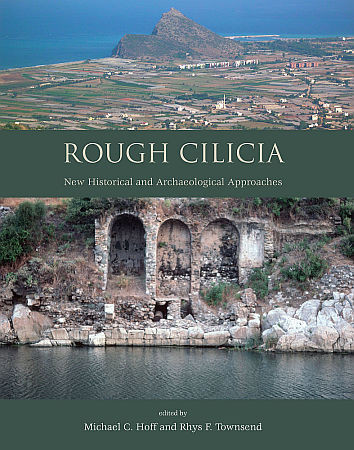
Format: Hardback
Pages: 320
ISBN: 9781842175187
Pub Date: 03 May 2013
Illustrations: 260 col illus.
Description:
The region of Rough Cilicia (modern area the south-western coastal area of Turkey), known in antiquity as Cilicia Tracheia, constitutes the western part of the larger area of Cilicia. It is characterised by the ruggedness of its territory and the protection afforded by the high mountains combined with the rugged seacoast fostered the prolific piracy that developed in the late Hellenistic period, bringing much notoriety to the area. It was also known as a source of timber, primarily for shipbuilding.
The twenty-two papers presented here give a useful overview on current research on Rough Cilicia, from the Bronze Age to the Byzantine period, with a variety of methods, from surveys to excavations. The first two articles (Yağcı, Jasink and Bombardieri), deal with the Bronze and Iron Ages, and refer to the questions of colonisation, influences, and relations. The following four articles (Tempesta, de Souza, Tomaschitz, Rauh et al.) concern the pirates of Cilicia and Isauria who were a big problem, not only for the region but throughout the Mediterranean and Aegean during the late Hellenistic and especially Roman periods. Approaching the subject of Roman Architecture, Borgia recalls Antiochus IV of Commagene, a king with good relations to Rome. Six papers (Spanu, Townsend, Giobbe, Hoff, Winterstein, and Wandsnider) publish work on Roman architecture: architectural decoration, council houses, Roman temples, bath architecture, cenotaph, and public buildings. Ceramics is not neglected and Lund provides a special emphasis on ceramics to demonstrate how pottery can be used as evidence for connections between Rough Cilicia and northwestern Cyprus. Six contributions (Varinliog(lu, Ferrazzoli, Jackson, Elton, Canevello and Özy?ld?r?m, Honey) deal with the Early Christian and Byzantine periods and cover rural habitat, trade, the Kilise Tepe settlement, late Roman churches, Seleucia, and the miracles of Thekla. The final article (Huber) gives insight into methods applied to the study of architectural monuments.
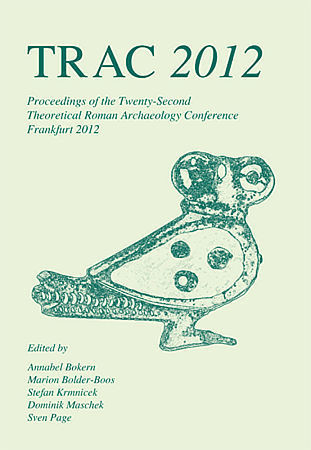
Format: Paperback
Pages: 220
ISBN: 9781782971979
Pub Date: 30 Apr 2013
Series: TRAC
Description:
The twenty-second Theoretical Roman Archaeology Conference (TRAC) was held at the Goethe-University Frankfurt am Main in spring 2012. During the three-day conference fifty papers were delivered, discussing issues from a wide range of geographical regions of the Roman Empire, and applying various theoretical and methodological approaches. An equally wide selection of subjects was presented: sessions looked at Greek art and philhellenism in the Roman world, the validity of the concept of ‘Romanisation’, change and continuity in Roman religion, urban neighbourhood relations in Pompeii and Ostia, the transformation of objects in and from the Roman world, frontier markets and Roman archaeology in the Provinces.
In addition, two general sessions covered single topics such as the ‘transvestite of Catterick’, metal recycling or Egyptian funeral practice in the Roman period. This volume contains a selection of papers from all these sessions.
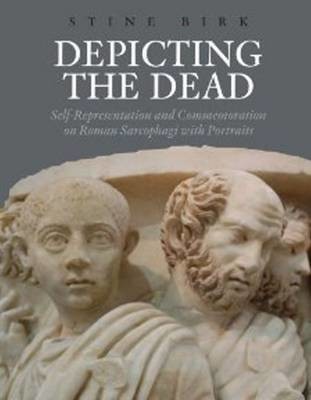
Format: Hardback
Pages: 333
ISBN: 9788771240184
Pub Date: 28 Feb 2013
Imprint: Aarhus University Press
Description:
The present monograph takes its place in a now well-established tradition of seeing sarcophagi as visual statements of deceased individuals that used allegories to plot lives and personal memories against mythological and other idealised narratives. It focuses on Roman sarcophagi, often referred to as stadtrömisch, which reflects the fact that the field has traditionally been dominated by German scholars. The aim of the book is twofold: Firstly, it is an exploration of how to read Roman sarcophagi, which starts from those with portraits, but which can contribute more broadly to the study of sarcophagi in general.
Secondly, this book investigates gender values as represented through images and how to locate the individual in standardised iconography.
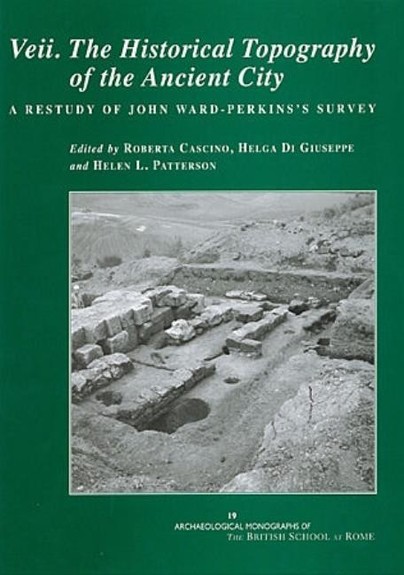
Format: Hardback
Pages: 432
ISBN: 9780904152630
Pub Date: 21 Feb 2013
Imprint: British School at Rome
Series: Archaeological Monographs of the British School at Rome
Illustrations: 142 illus, 2 colour plates
Description:
During the nineteenth century, antiquarians such as William Gell and George Dennis visited the ancient city of Veii, some 15 km north of Rome, and noted the rapid destruction of its archaeology. The city continued under to be under threat, and in the 1950s was the subject of ground-breaking survey and excavation by John Ward-Perkins. However, the results of his fieldwork were never published fully.
Knowledge and understanding of material culture (especially pottery, votive objects and architectural terracottas) has increased dramatically over the past fifty years, so allowing the authors to reveal the full potential of the data. This publication reaffirms many of Ward-Perkins’s original insights, and contextualizes his research within the new discoveries of the past fifty years; whilst an important contribution to our knowledge, it is also a spur to further work.
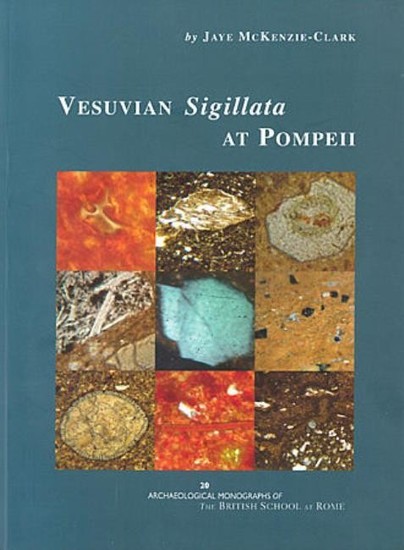
Format: Paperback
Pages: 162
ISBN: 9780904152623
Pub Date: 21 Feb 2013
Imprint: British School at Rome
Series: Archaeological Monographs of the British School at Rome
Illustrations: 32 illus, 4 colour plates, CD Rom
Description:
The destruction of Pompeii in ad 79 provides a unique opportunity to explore the use of everyday items. It allows us to identify the source and variety of products available within the city, and enables us to track changes in the consumption of goods over time. In this volume, Jaye McKenzie-Clark presents the far-reaching results of her examination of the red slip tableware within three regions of the city.
It pinpoints the initial supply and use of Vesuvian Sigillata, and investigates factors that may have led to the popularity of this style of pottery. The investigation maps the on-going manufacture of these ceramics and identifies changes in production and consumption up to the time of the eruption. Examination of the distribution within contexts of different social use also reveals distinct patterns of consumer demands and consumption within Pompeian society. Such research helps us to explore and understand the use of goods within the city of Pompeii and throughout the Roman world, and also has the potential to shed light on patterns of behaviour in modern consumer societies.
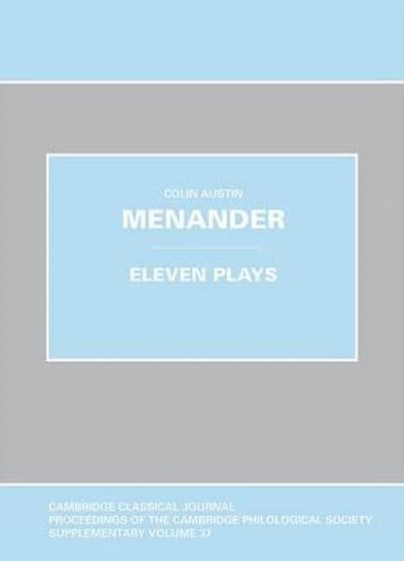
Format: Paperback
Pages: 84
ISBN: 9780956838124
Pub Date: 01 Feb 2013
Imprint: Cambridge Philological Society
Series: Proceedings of the Cambridge Philological Society Supplementary Volume
Description:
Colin Austin, Professor of Greek at Cambridge University 1998–2008, was one of the world’s foremost experts in the reconstruction and interpretation of Greek comedy. When he died in August 2010, he was working towards a new edition of Menander for the series Oxford Classical Texts, for which he had completed only the shorter pieces: Dis Exapaton, Encheiridion, Georgos, Heros, Karchedonios, Kitharistes, Koneiazomenai, Leukadia, Perinthia, Phasma and Theophoroumene. The present volume contains the papyri and book fragments of these eleven plays, edited by Colin Austin.
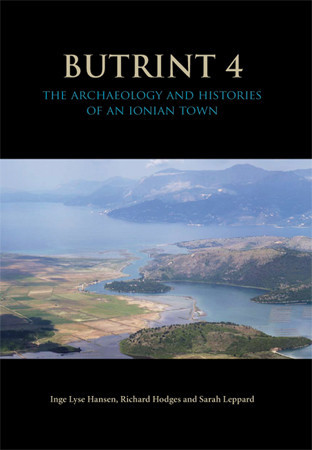
Format: Hardback
Pages: 250
ISBN: 9781842174623
Pub Date: 08 Jan 2013
Series: Butrint Archaeological Monographs
Illustrations: c.50 col & c.325 b/w illus
Description:
This richly illustrated volume discusses the histories of the port city of Butrint, and its intimate connection to the wider conditions of the Adriatic. In so doing it is a reading, and re-reading, of the site that adds significantly to the study of Mediterranean urban history over the longue durée . Firstly, the book proposes a new paradigm for the development-history of Butrint - based on discussions of the latest archaeological, historical and landscape studies from approximately 20 new excavations and surveys, together covering a temporal arch from prehistory to the early modern period.
Secondly, it examines how the perception of the city influenced the archaeological methodology of 20th-century studies of the site, where iteration and reversal were often being applied in equal measure. In this it asks important questions on the management of heritage sites and the contemporary role of archaeological practise. Inge Lyse Hansen is Adjunct Professor of Art History at John Cabot University and specialises in the visual and material culture of the Roman world. She has published on portraiture, funerary art and the use of role models and patronage and has edited several archaeological volumes. Richard Hodges is Scientific Director of the Butrint Foundation, a leading medieval archaeologist and the author of more than 20 books. Sarah Leppard has led or participated in more than 15 excavations in eight countries and has managed major excavations at Butrint.
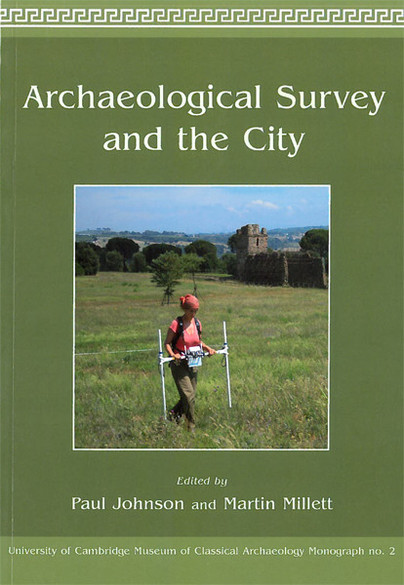
Format: Paperback
Pages: 288
ISBN: 9781842175095
Pub Date: 31 Dec 2012
Series: University of Cambridge Museum of Classical Archaeology Monographs
Illustrations: 275 illus.
Description:
In the past 30 years archaeological field survey has become central to the practice of Classical Archaeology. During this time, approaches have developed from the systematic collection of artefacts to include the routine deployment of various geophysical and remote sensing techniques. The ability of archaeologists to reveal the topography of buried urban sites without excavation has now been demonstrated through a wide range of projects across the ancient world.
Archaeological Survey and the City reviews the results of such projects and in particular discusses the ways in which the subject might develop in the future, with an emphasis on the integration of different strands of evidence and issues of archaeological interpretation rather than on the technicalities of particular methodologies. Several themes emerge from the fourteen papers. The first is the increasing number of large-area surveys providing data at a sufficient scale to make a significant contribution to our understanding of classical cities both in the Mediterranean and beyond (eg Baelo Claudia, Caistor-by-Norwich, Xanten, Ammaia). The second theme is the generation of new types of data through the application of specific techniques to address particular questions pertaining to urban life, for instance in identifying particular industrial processes such as metal-working (eg Munigua, Wroxeter) or the increasing success in isolating cemeteries (eg Silchester). The techniques involved in identifying these phenomena complement the use of geochemical survey to characterise particular soil properties related to animal husbandry, cultivation or the creation of domestic waste deposits (eg Faleri Veteres), an area which has considerable future potential. A third theme lies in the application and integration of multiple techniques to provide new dimensions to the information available. The data from a number of survey projects have demonstrated that a single survey technique will rarely, if ever, reveal all of the potential information so there is a significant benefit to be derived from applying multiple survey-strategies to the questions being asked of a site. These themes emphasise the dynamism of research in this area, which continues to revolutionise the study of ancient cities.
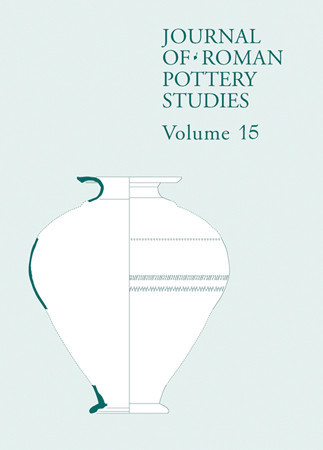
Format: Paperback
Pages: 288
ISBN: 9781842175002
Pub Date: 01 Dec 2012
Series: Journal of Roman Pottery Studies
Illustrations: 165 b/w + col illus.
Description:
This volume of JRPS carries a broad range of papers reflecting the detailed ongoing scholarship in the field of Roman pottery studies. There is a marked international dimension to the eleven papers. In part, this simply follows from the extensive geography of the Roman Empire and its influence, yet it also reflects the identification of the Journal of Roman Pottery Studies as a leading vehicle for the publication of quality research in Roman ceramics not only from Roman Britain but from the whole of the Roman Empire.
Also includes an editorial, book reviews and obituaries.
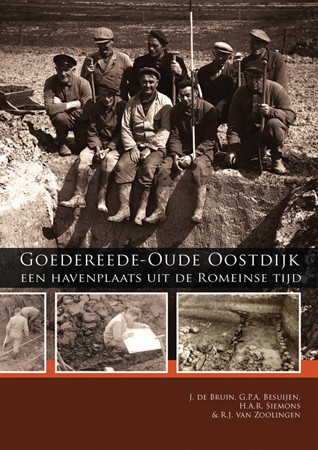
Format: Paperback
Pages: 200
ISBN: 9789088900839
Pub Date: 30 Sep 2012
Imprint: Sidestone Press
Description:
DUTCH DESCRIPTION: Even ten noorden van Goedereede, in de Oude Oostdijkpolder, bevond zich in de Romeinse tijd een nederzettingsterrein. Hier vonden in de jaren '50 en '80 van de twintigste eeuw opgravingen plaats. Middelen voor de uitwerking van de resultaten van het onderzoek ontbraken echter, waardoor jarenlang onduidelijk was wat de omvang en het karakter van de nederzetting was.
In 2010-2011 is de vindplaats in het kader van het onderzoeksprogramma Odyssee ontsloten. Hierbij zijn de destijds opgegraven grondsporen en een deel van het vondstmateriaal geanalyseerd. Het nederzettingsterrein was gelegen aan een bevaarbare kreek, waarlangs de toenmalige bewoners beschoeiingen en kadewerken hebben aangelegd. Andere opvallende elementen zijn de planmatige uitleg van de nederzetting, het voorkomen van pakhuizen en grote hoeveelheden geïmporteerd aardewerk. Op basis van deze gegevens kan gesproken worden van een havenplaats, die functioneerde tussen 85 en 225 na Christus. De nederzetting heeft waarschijnlijk een belangrijke functie gehad in de overslag en distributie van diverse goederen, waaronder keramiek en voedingsgewassen. Tevens gaat het om een van de grotere plaatsen uit de Romeinse tijd in het westen van Nederland. De gegevens van het onderzoek in Goedereede tonen aan dat de grootschalige overslag en distributie van goederen, die heden ten dage het economisch leven in de West-Nederlandse delta domineert, al in de Romeinse tijd een aanvang heeft genomen. ENGLISH DESCRIPTION: In the 1950's and 1980's a settlement from the Roman period was excavated in Goedereede. Until now the results had not been published. The analysis shows a settlement with a harbour that was in use between 85 and 225 AD. This settlement will have had an important role in the distribution trade goods, including ceramics and food. The book contains an extensive catalogue of Terra Sigilata. Dutch Language Edition.
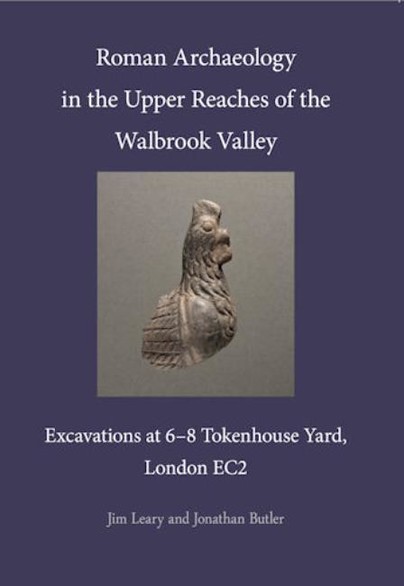
Format: Paperback
Pages: 150
ISBN: 9780956305459
Pub Date: 29 Sep 2012
Imprint: Pre-Construct Archaeology
Illustrations: 70 b.w and Col Figures
Description:
Tokenhouse Yard in the City of London lies in the upper reaches of the valley of the Walbrook. The Walbrook was undoubtedly a powerful and important topographical feature of the Roman city, rising to the north and coursing through the centre of the settlement cleaving it into two low hills, Cornhill and Ludgate Hill, before discharging into the Thames to the south. This area witnessed the build up of almost 4m of stratified deposits in the years between c.
AD 43 and 400. The results of excavation presented in this volume tell the story of the struggle to live alongside the river, attempts to control its course and alleviate flooding. Waterlogged conditions resulted in outstanding preservation of organic remains and artefacts.
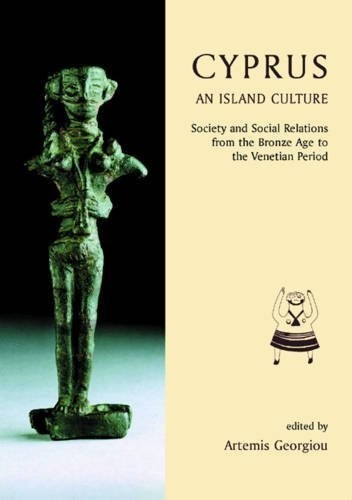
Format: Hardback
Pages: 256
ISBN: 9781842174401
Pub Date: 31 Aug 2012
Illustrations: b/w illus
Description:
This volume, introduced by Edgar Peltenburg, presents the results of latest research by young scholars working on aspects of Cypriot archaeology from the Bronze Age to the Venetian period. It presents a diversity excavation, material culture, iconographic and linguistic evidence to explore the themes of ancient landscape, settlement and society; religion, cult and iconography; and Ancient Cyprus and the Mediterranean.
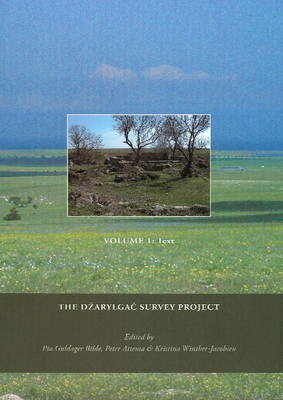
Format: Hardback
Pages: 675
ISBN: 9788779345218
Pub Date: 31 Jul 2012
Imprint: Aarhus University Press
Series: Black Sea Studies
Illustrations: colour & b/w photos & illus
Description:
This book is a publication of the Danish-Dutch-Ukrainian survey project carried out between 2006 and 2008. The project introduced the systematic, intensive survey to the region. It took place at both sides of Lake Džarylga -- that is the hinterland of the ancient Greek settlement of Panskoe I in the Tarchankut Peninsula (Western Crimea).
The survey aimed at investigating the landscape from prehistory until early modern times. We could conclude that the region was most intensively settled in the Late Classical and Early Hellenistic period. The results were spectacular: a large number of undisturbed Greek and ‘barbarian' sites were located, which have completely changed our understanding of ancient settlement patterns in the region.
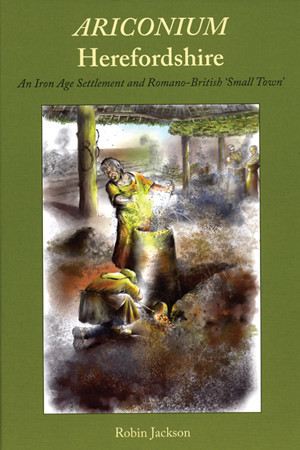
Format: Hardback
Pages: 304
ISBN: 9781842174494
Pub Date: 15 Jul 2012
Illustrations: b/w illus
Description:
The Roman 'small town' of Ariconium in southern Herefordshire has long been known as an important iron production centre but has remained very poorly understood. The town is suggested to have developed from a late Iron Age Dobunnic tribal centre, which owed its evident status and wide range of contacts to control of the production and distribution of Forest of Dean iron. Rapid expansion during the second half of the 1st century AD indicates that the local population was able to articulate rapidly with the economic opportunities the Roman conquest brought.
The town developed as a typical small roadside settlement and a major iron production centre but a heavy reliance on ironworking appears to have made it especially vulnerable to the economic decline of the latter part of the 4th century. Some role as an administrative and political centre can be suggested during the late 4th century and may be implicated in the survival of the name Ariconium in the early medieval kingdom of Erynyg or Archenfield, however, firm archaeological evidence for any continuing occupation remains elusive.
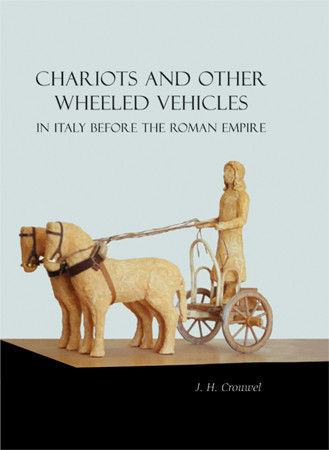
Format: Hardback
Pages: 248
ISBN: 9781842174678
Pub Date: 30 Jun 2012
Illustrations: over 170 b/w figs and plates
Description:
Chariots and Other Wheeled Vehicles in Italy before the Roman Empire presents evidence for transport by wheeled vehicle in Italy before the Roman Imperial period, the beginning of which is often thought to be marked by Augustuss conquest of Egypt in 30 BC. The study begins with a glossary of technical terms and with evidence for roads and the animals that were used in draught. The major part is concerned with the vehicles themselves - two-wheeled chariots and carts and four-wheeled wagons - their construction, the ways in which their draught animals were harnessed and controlled, and the uses to which the equipages were put.
A wide range of evidence is drawn upon including figured documents such as architectural terracottas, stone reliefs, vase- and wall paintings; bronze and terracotta models and the remains of actual vehicles, in a few cases accompanied by their harness teams recovered from tombs, primarily from central and northern Italy of the eighth and seventh centuries BC onwards. The concluding chapter looks at the history of wheeled vehicles in Italy before the Roman Imperial period. It traces local, Italic characteristics and possible foreign influences, and assesses the relative economic and social importance of the different kinds of wheeled vehicles and of other means of land transport - by pack and riding animals. In appendices the vehicles depicted in so-called Situla Art and the 'Celtic chariot' are discussed. Lavishly illustrated with over 170 plates and figures, this book is important for the history of transport, technology and draught.

Format: Hardback
Pages: 350
ISBN: 9780905205557
Pub Date: 08 Jun 2012
Imprint: Francis Cairns Publications
Series: ARCA, Classical and Medieval Texts, Papers and Monographs
Illustrations: (Arca 51, Francis Cairns Ltd., 2012)
Description:
The fifteenth volume of PLLS (and the fifth in the Langford series) contains major papers on early Greek epic and tragedy, aspects of ekphrasis, Roman republican culture and politics, and astrology in the imperial period.
















